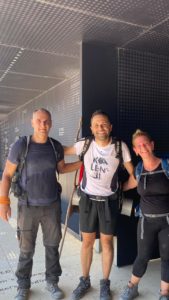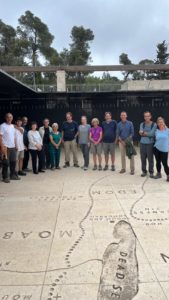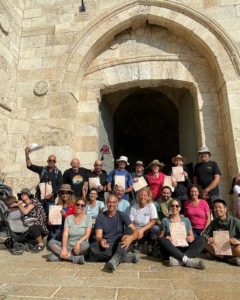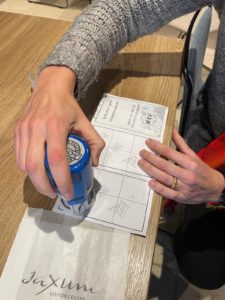¿What inspired you to launch “The Way to Jerusalem”?
This initiative, devised in 2023, aims to reconstruct the ancient pilgrimage routes to Jerusalem. It aims to allow people from all over the world to experience a process of personal development during their journey. Along the way, pilgrims interact with local communities, fostering dialogue and multicultural interactions, which leads to connections between people and the creation of mutual relationships. This promotes respect and tolerance for the pilgrim’s personal journey, the people around them, and the land on which they walk.
The pilgrimage towards a sacred place that has been the epicenter of faith and religious history for millennia is an experience we wish to replicate in our land, so that we can contribute to the connection between people of different cultures and backgrounds, united in a common goal: to reach Jerusalem by walking a pilgrimage route. We always share the story of the “three callings” that motivated us to launch this Way, but those stories are reserved for those who decide to start the journey and contact us through our website, detailed further below in this interview.

Golan, Yael and the priest of Toledo Valentín in Saxum, after walking the way to Emmaus
¿What differentiates “The Way to Jerusalem” from other pilgrimage routes or trips?
One of the main differences is the holistic approach we adopt. We do not focus solely on religious or historical aspects but also on cultural and social dimensions. Participants will have the opportunity to engage with local communities, learn about different traditions, and participate in activities that foster dialogue. “The Way to Jerusalem” has the potential to be a multicultural and interreligious project. We dream that our initiative will serve as a catalyst for peace. Values like simplicity, humility, and gratitude guide and illuminate our path.

Group of pilgrims with Yael and Golan in Saxum
¿What have you found most gratifying in developing this project, up to now?
Experiencing the positive reactions of the communities along the route. Many people have expressed their enthusiasm for the possibility of increasing cultural exchange and learning. It is reassuring to know that our project can bring tangible benefits to these areas and help preserve their unique heritage. Furthermore, from a tourism aspect, we contribute by growing the number of people familiar with this Land which is Holy for everyone.
Another gratifying aspect has been working in tandem with various organizations and individuals who share our vision. It has been incredible seeing the number of people who are passionate about promoting Jerusalem as a city of peace and coexistence. The support we have received has been very motivating.
About “The Way of Silence”
It is the fourth part of the pilgrimage route to Jerusalem, and we are most focused on it these days. Spanning about 112 km divided into 6 stages, “The Way of Silence” begins at the ancient port of Jaffa and ends at the Jaffa Gate in the Old City of Jerusalem. It starts in the urban areas of the coastal cities, extends through the coastal plains, and ascends the two ridges surrounding Jerusalem. On the final day, the pilgrim reaches the Old City of Jerusalem in the last segment.
This route has been used by Jewish pilgrims, and also by Christian pilgrims since the 4th century, and Muslims since the latter part of the first millennium. Pilgrims traditionally arrived by sea through the port of Jaffa (from the west) and by land through the coastal plains (from the north).

Jaffa Gate, Jerusalem
The oldest route, for which archaeological evidence exists, belongs to the ancient Roman road paved around the end of the first century as part of an imperial road system leading from the coastal plains to Jerusalem. The Roman road from Jaffa to Jerusalem began at the port of Jaffa and continued towards Ramla and Lod. There, it split into two main routes: the route of Beth Horon and the route of Emmaus.
The Way of Silence follows the path taken by pilgrims from Jaffa to Jerusalem via Emmaus.

Saxum seal
We are very excited to see how the project develops with more and more participants from all over the world. We wish to broaden this path with all those who may join us, from all religions and cultures. Additional information can be found at: www.thewaytojerusalem.org
